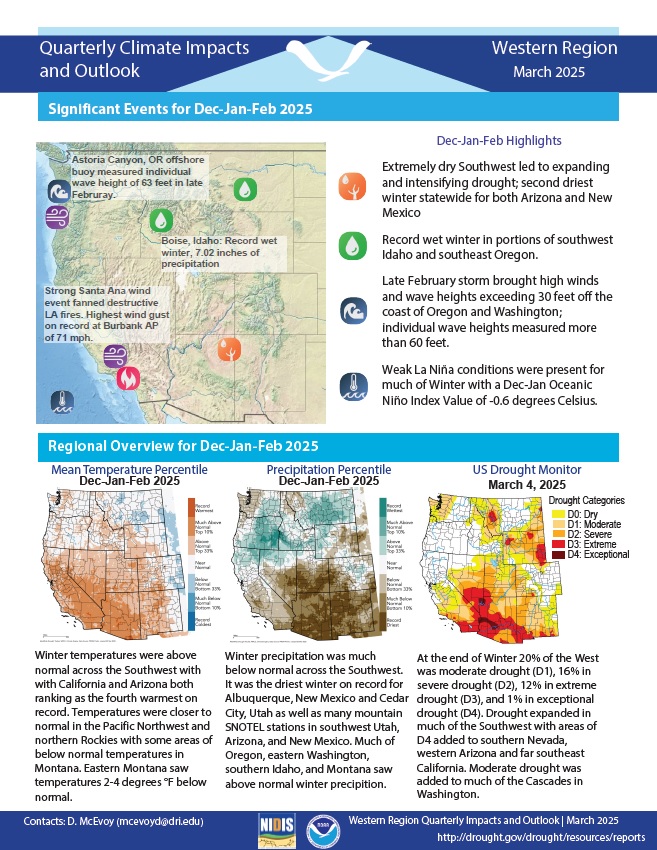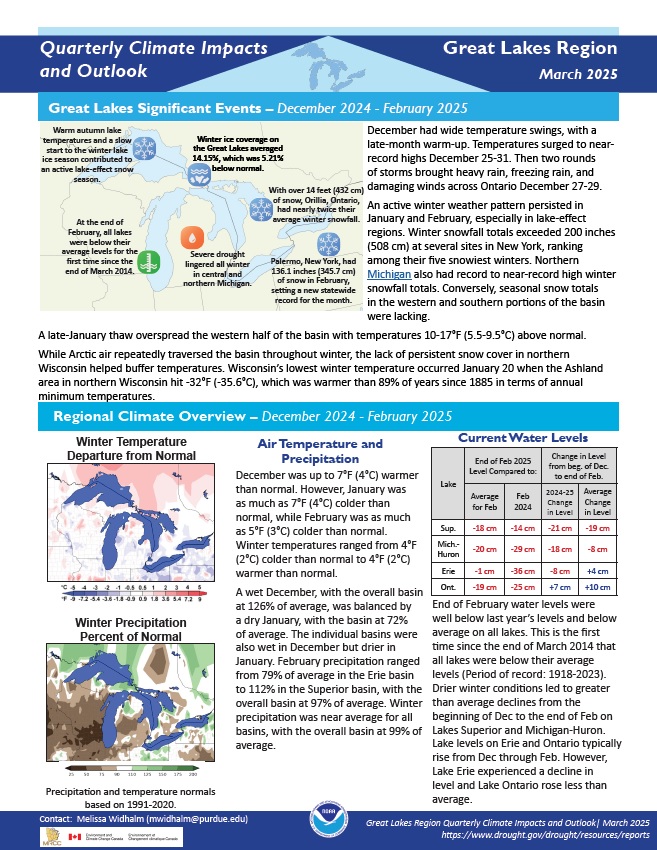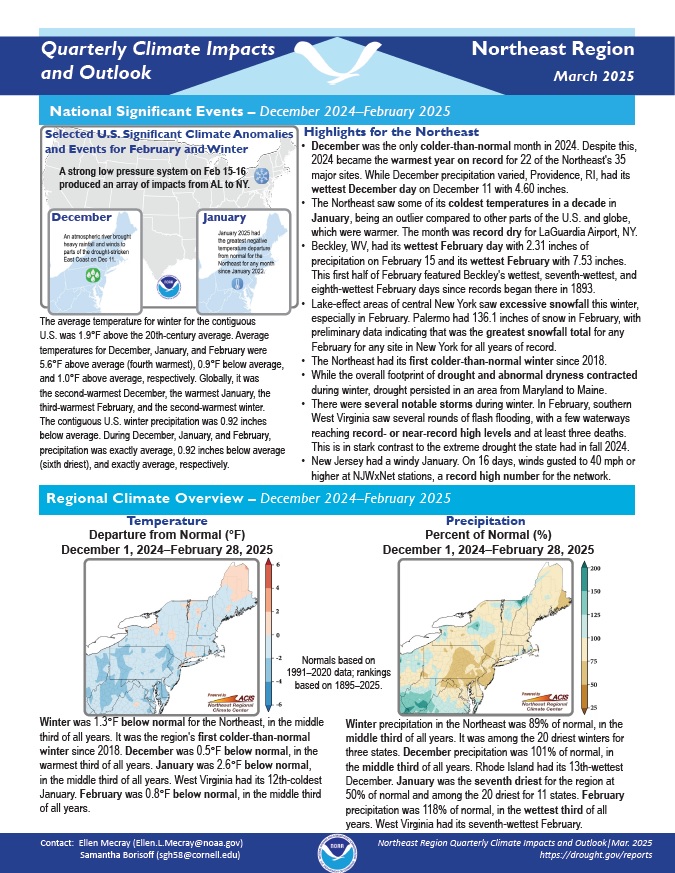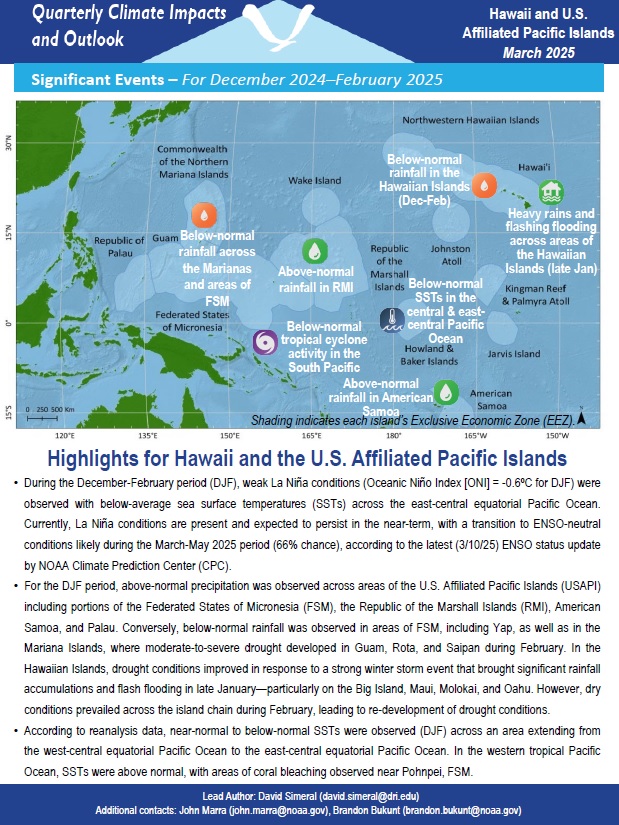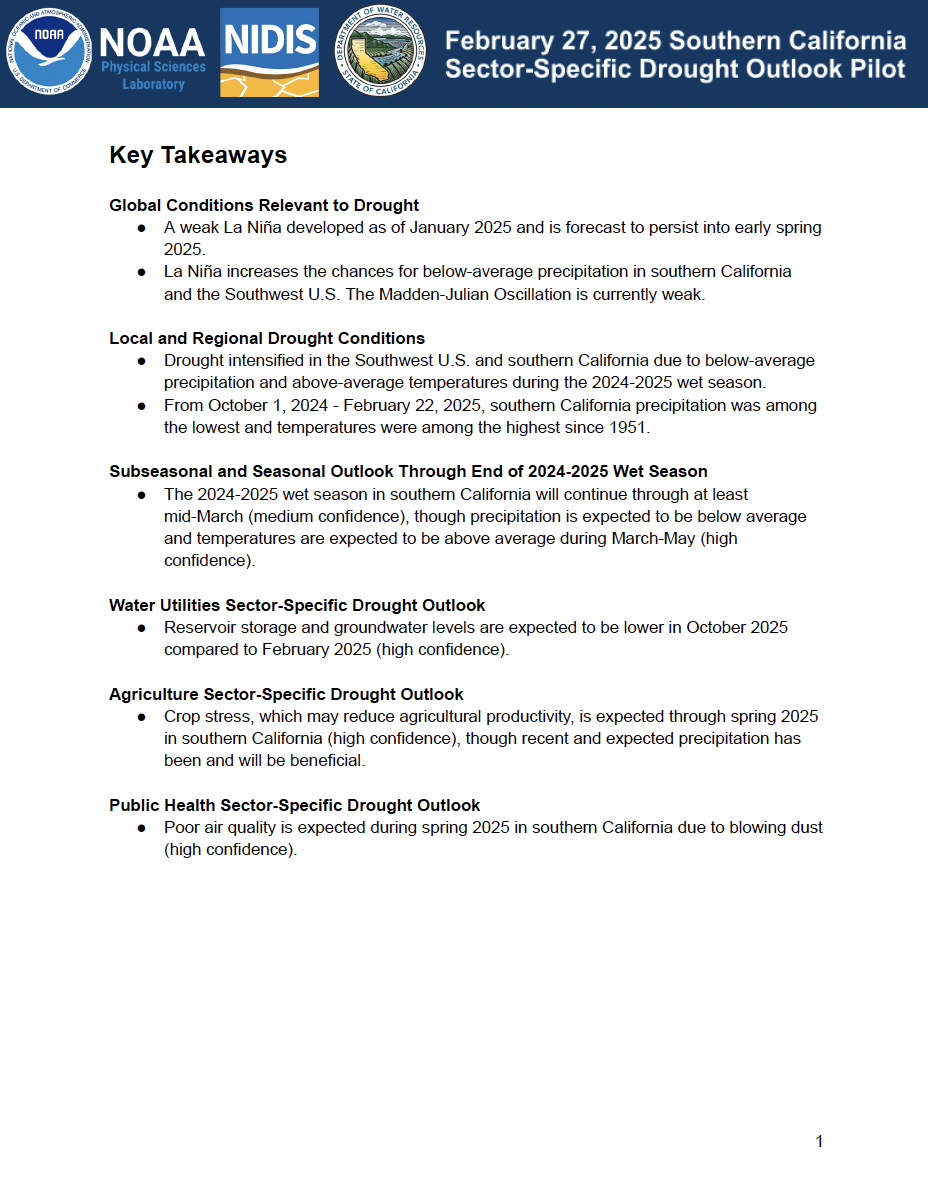Quarterly Climate Impacts and Outlook for the Southeast and Caribbean Region for December 2024–February 2025. Dated March 2025. (Updated April 2025 to add Spanish translation of Caribbean information.)
Quarterly Climate Impacts and Outlook for the Western Region for December 2024–February 2025. Dated March 2025.
Winter temperatures were above normal across the Southwest with California and Arizona both ranking as the fourth warmest on record. Temperatures were closer to normal in the Pacific Northwest and northern Rockies with some areas of below-normal temperatures in Montana. Winter precipitation was much below normal across the Southwest. Much of Oregon, eastern Washington, southern Idaho, and Montana saw above-normal winter precipitation.
Quarterly Climate Impacts and Outlook for the Midwest Region for December 2024–February 2025. Dated March 2025.
Winter season temperatures were near normal in the north and slightly below normal across the south. Winter season precipitation was above normal across the Ohio River Valley and the far upper Midwest and below normal elsewhere. This seasonal pattern of wetness and dryness was largely similar in December, January, and February across the region.
Quarterly Climate Impacts and Outlook for the Great Lakes Region for December 2024–February 2025. Dated March 2025.
Winter temperatures ranged from 4°F (2°C) colder than normal to 4°F (2°C) warmer than normal. Winter precipitation was near average for all basins, with the overall basin at 99% of average.
Quarterly Climate Impacts and Outlook for the Canadian and U.S. Prairies and High Plains for December 2024–February 2025, with an outlook for April–June 2025. Dated March 2025.
Despite warm temperatures in December, a frigid February led to below-average seasonal temperatures across the central portion of the region. Very dry conditions were observed throughout southwestern Alberta and much of the High Plains. Areas in South Dakota, Minnesota, Wyoming, and Alberta received less than 45% of their normal precipitation this winter.
Quarterly Climate Impacts and Outlook for the Gulf of Maine Region for December 2024–February 2025. Dated March 2025.
Winter ranged from 2°C (4°F) colder than normal to 3°C (5°F) warmer than normal. Precipitation for winter ranged from 50% of normal to 175% of normal.
Quarterly Climate Impacts and Outlook for Alaska and Northwestern Canada for December 2024–February 2025, with an outlook for April–June 2025. Dated March 2025.
ECCC, NOAA, and partners created these outlooks to inform the public about recent impacts within their respective regions. Each regional report contains easy-to-understand language, and anyone can access them through the U.S. Drought Portal.
Quarterly Climate Impacts and Outlook for the Northeast Region for December 2024–February 2025. Dated March 2025.
Winter was 1.3°F below normal for the Northeast, in the middle third of all years. It was the region's first colder-than-normal winter since 2018. Winter precipitation in the Northeast was 89% of normal, in the middle third of all years. It was among the 20 driest winters for three states.
Quarterly Climate Impacts and Outlook for the Pacific Region for December 2024–February 2025. Dated March 2025.
NOAA’s National Integrated Drought Information System (NIDIS) and Physical Sciences Laboratory are partnering with the California State Climatologist/California Department of Water Resources, NOAA’s National Weather Service and National Centers for Environmental Information, and the California-Nevada Adaptation Program (a NOAA CAP team) on the Sector-Specific Drought Early Warning Outlook – Southern California Pilot.



